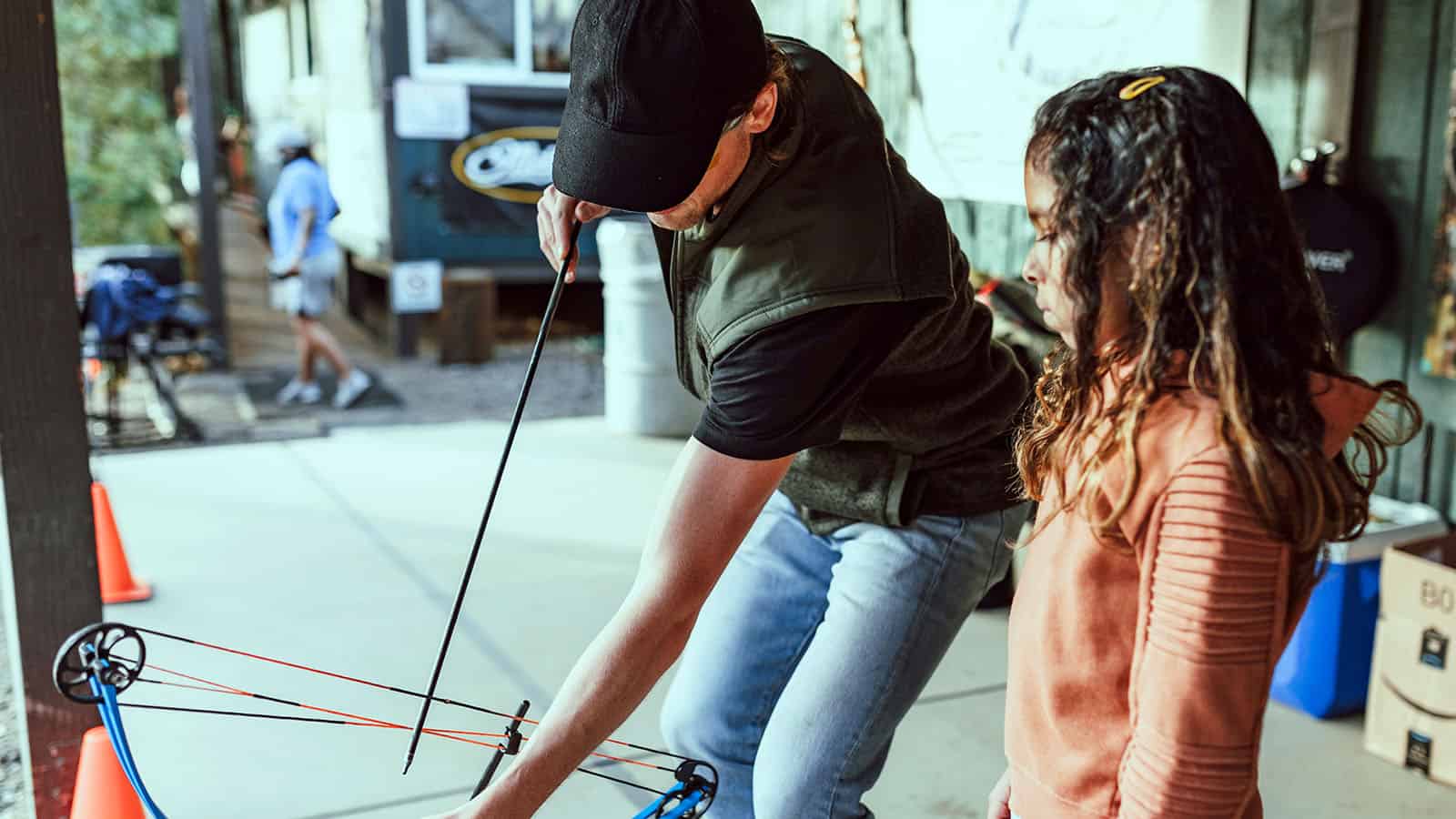If you are just getting into the world of hunting small game, then you might not know where to get started. After all, there is a lot to know about hunting small game with a bow and arrow.
For instance, you need to know what kinds of animals qualify as small game. You also need to know which ones are legal to hunt.
You also need to know when and where these animals can be hunted. What kind of gear you need and how to set up for your hunt to begin with are important too. These things and more will all be covered in this guide to bow hunting small game.
Species That We Can Hunt
First, there are many different animals that qualify as small game that may be hunted in the United States. These are generally divided into three main categories.
This includes small game mammals, small game birds, and amphibians and reptiles. Let’s take a closer look at all of the different animals that you can hunt as small game with a bow.
- Grouse.
- Doves and Pigeons.
- Partridge.
- Quail.
- Ducks.
- Geese.
- Snipes.
- Woodcock.
- Turkey. Click here to check out our comprehensive turkey bowhunting guide.
- Swans.
- Frogs.
- Turtles.
- Hares and rabbits.
- Squirrels.
Tips for Bowhunting Pigeons
Here are some of the absolute biggest tips that you need to follow for bow hunting pigeons and other such small birds. Pigeon hunting is not ideal for beginners. These birds are very small and fast. It takes a lot of skill to successfully shoot pigeons with a bow.
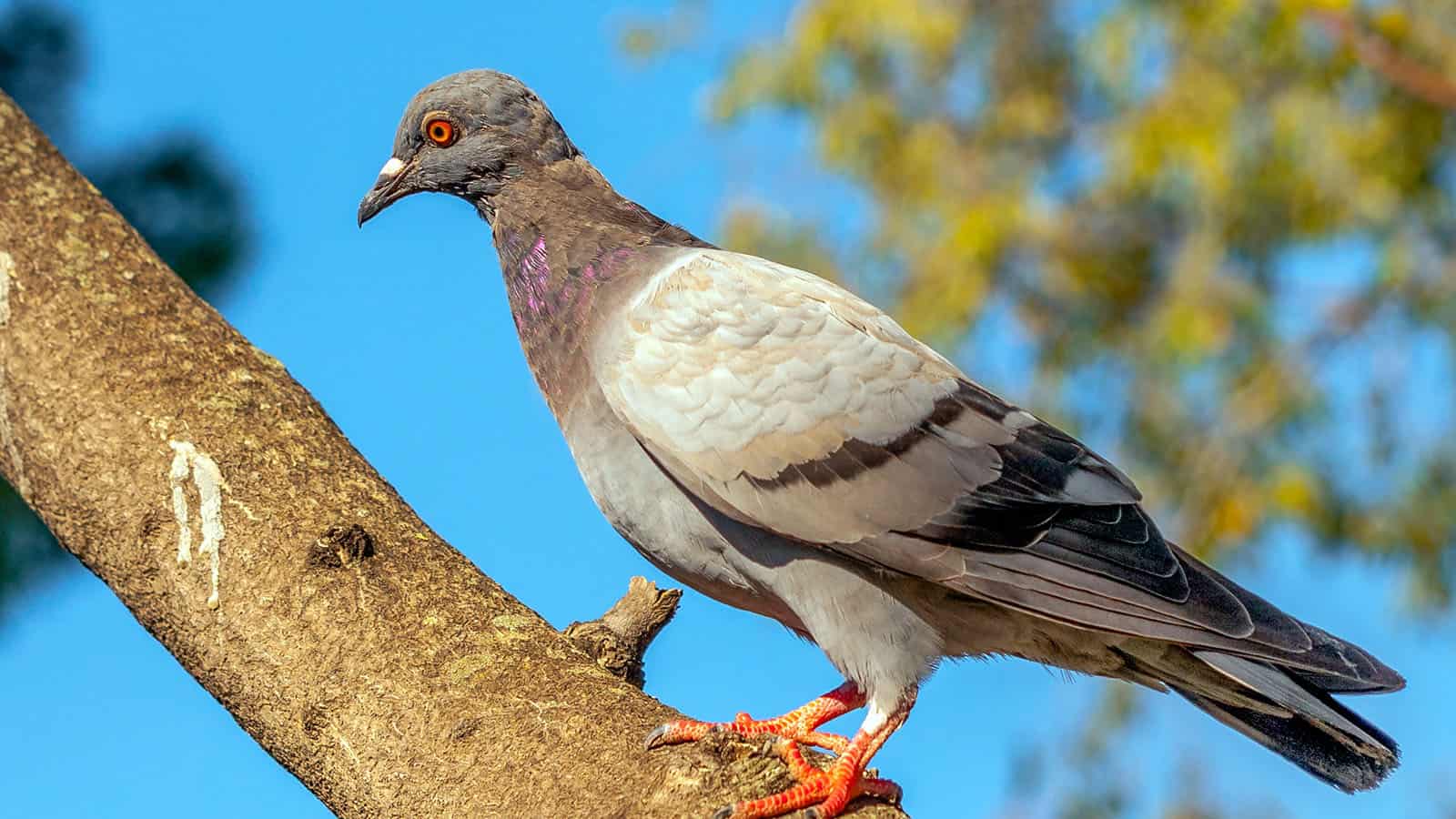
- Pigeons are very fearful and flighty birds. It is essential that you stay out of sight and downwind. If a pigeon catches sight or smell of you, they will flee immediately.
- For bow hunting pigeons, both traditional bows and compound bows tend to work just fine. Compound bows are of course usually a bit easier to use.
- One of the best types of arrows to use for pigeon hunting are G5 small game head arrows. If you are using wooden shafts, go for 135 grain and glue-on tips. If you have carbon arrows, use 100 grain screw-in tips. Remember that pigeons are quite small. You want to use arrows with fairly small diameters.
- Some of the best times to shoot pigeons are when they were most active, both at dawn and dusk. If you can shoot pigeons with the sun on your back, you are at an advantage. This is because the sun will blind the pigeons and obscure you from their sight.
- Pigeons absolutely love food. The best places to find pigeons to hunt are around grain fields and cornfields. This is especially the case after they have been cut down and harvested. These are also great areas to decoy birds in.
Tips for Bowhunting Turkey
If you are looking for your next big Thanksgiving meal, and turkey is on the menu, then there’s nothing better than hunting your own turkey. Furthermore, hunting a Turkey is a bit easier than hunting pigeons. Turkeys present much bigger targets than pigeons. They aren’t nearly as fast either. Follow the tips as listed below to successfully shoot a turkey with your bow.
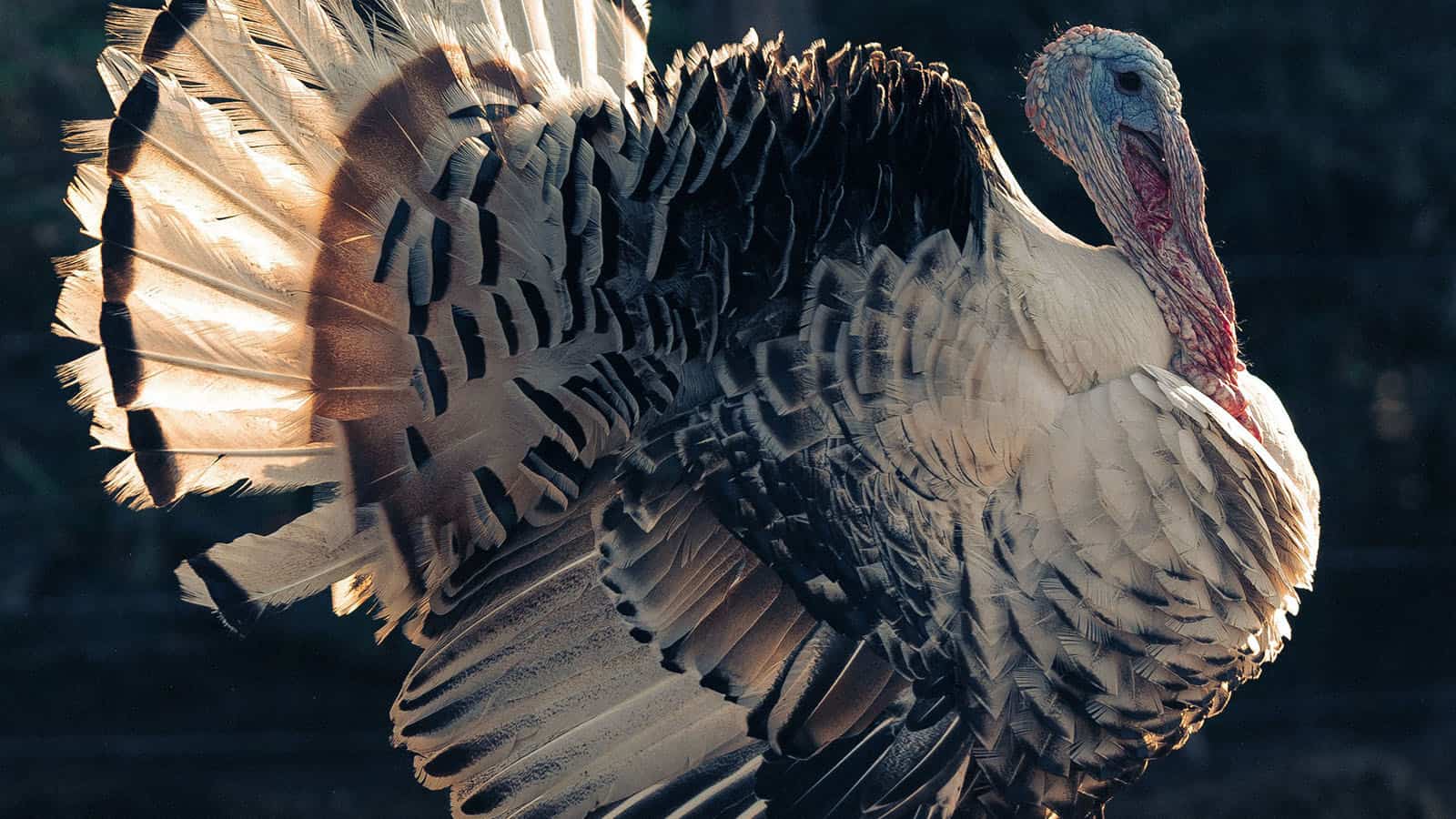
- If you plan on bow hunting for turkeys, the first thing you should do is scout the location. If you plan on setting up a blind, you absolutely need to know that turkeys are nearby. Blinds are stationary. If the turkeys aren’t there, you’ll be out of luck. It’s always a good idea to use some trail or game cameras so you can see where the turkeys are. This way, you can decide whether you need to be stationary or mobile.
- If you are setting up a blind, it is absolutely essential that you use brush and other camouflage to obscure the blind site. As opposed to what some people might think, turkeys are somewhat intelligent. If you are in a blind that is not obscured from sight, turkeys will be wary of the structure. You need to camouflage the structure.
- Turkey decoys are essential for hunting. One of the worst things you can do is to purchase unrealistic looking decoys. Instead of luring turkeys in, unrealistic decoys will actually scare them away. It is absolutely essential that your turkey decoys look as realistic as possible.
- One of the easiest ways to get turkeys near you is to call them using a variety of bird calls. It is best if you know how to use the loud yelping calls and the quiet whispering calls in combination. You have to be able to click, purr, and putt with your turkey calls to successfully lower them in.
- Turkeys are quite fearful. It’s best if you stay as quiet and motionless as possible. The closer you let the turkey get before taking your shot, the better. Turkeys present a rather large target, so a close range shot should be doable even if the Turkey starts to flee.
- Even though turkeys present fairly large targets, they’re still pretty nimble. Therefore, if you miss your first shot, you always want to have a second arrow ready to go. If you miss your first shot and your second arrow isn’t ready, chances are almost 100% that the turkey will get away.
- When it comes to bow hunting for turkeys, the most popular choice is the modern compound bow. That said, longbows and traditional recurve bows are all popular options as well. On that note, you are also best off using broadhead arrows for Turkey hunting.
Tips for Bowhunting Rabbits and Hares
Now we have some of the airborne animals out of the way. Let’s take a closer look at some of the biggest tips for hunting rabbits and hares with your bow. Yes, this is a rather hard one, because these animals are small and fast. They also blend in with their surroundings quite well. It takes a rather skillful and experienced bow hunter to be successful when hunting for hares and rabbits.
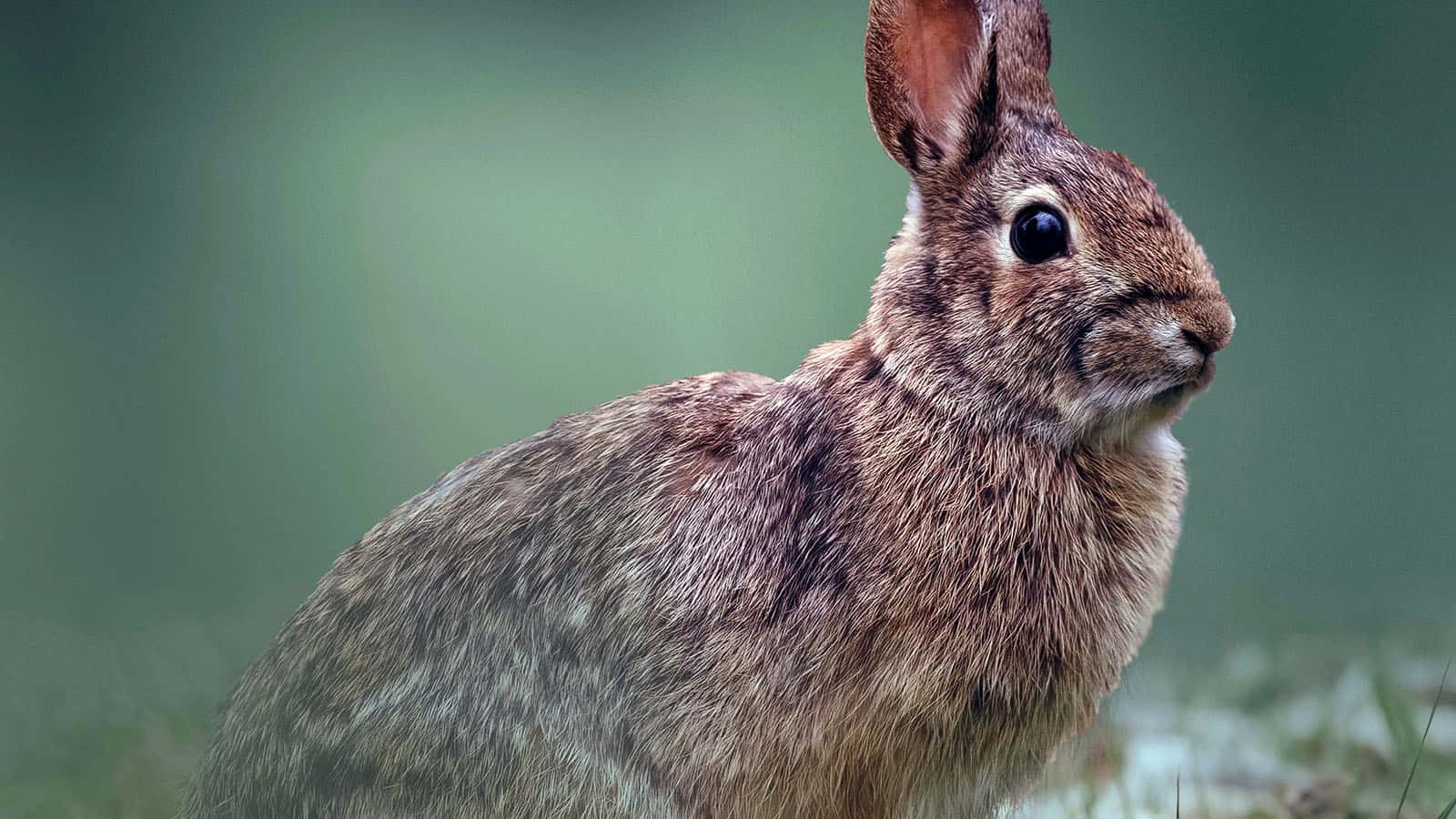
- Hunting for rabbits and hares is a lot different than hunting for birds. With birds, they’re out in the open and you wait for them to come to you. However, with rabbits and hares, they’re usually always hiding. This means that you need to go to random falling trees, piles of brush, and bushes, to try and scare the rabbits out into the open. This generally means that rabbit hunting requires two people. You need one to scare them out into the open, and the other one to do the shooting.
- When you are scaring rabbits out of their holes and dens, try to pay attention to the various exits that the hiding spots have period rabbits often nest in areas that have multiple exits, so they can escape in various ways when danger presents itself. You need to have those exits covered.
- Rabbits may not be scared out of their holes so easily. If this is the case, your next best bet is to use a stick to literally poke at them to scare them out.
- Just like with bird hunting, you always want to have a second or even a third arrow ready to go, because rabbits are very quick and easy to miss. If you missed the first shot and don’t have an arrow ready for your second shot, you will lose the rabbit.
- Because rabbits are very fast, you also need to be able to draw your bow fast. This means that generally speaking, a recurve bow with a draw weight of around 30 pounds is best. This allows you to very quickly and easily dry your bow repeatedly without fatiguing.
- The best type of arrowhead to use for rabbit hunting is the blunt point arrow. Blunt force trauma is usually more than enough to take care of any rabbit or hare.
Tips for Bowhunting Squirrels
If you choose to go bow hunting for squirrels, it is realistically one of the hardest things you’ll ever do. These are some of the smallest, speediest, and most elusive game animals out there. There’s also the fact that they spend a lot of their time in the trees, which automatically makes them much harder to target.
- You can use a regular compound bow to hunt for squirrels. Some people may use recurve bows, but many find them to be too slow. Hunting for squirrels requires both patience and speed, which means that you want a bow that is very easy to draw and hold and be in a drawn position. A compound bow with a lot of let off is generally the best for this.
- You also want to use the right kind of Arrowhead here, which usually means using a blunt or a judo Arrowhead. Personally, we recommend going for a blunt arrowhead.
- If you are using a judo or a blunt Arrowhead, shooting for the head is best. However, if you happen to use a broadhead for squirrel hunting, shooting for the vital organs is best.
- Bow hunting for squirrels is very challenging because they’re often up in trees and they’re very fast. Therefore, you need to practice your extreme angled shots. You have to be able to aim properly when shooting high up into trees.
- Remember that squirrels are also fairly skittish creatures, which means that you don’t want to do a lot of moving. Unlike some other animals where you may be tempted to walk around in search of them, you shouldn’t do this for squirrels. You should sit in one place and wait for them to come to you.
Tips for Bowhunting Coyote
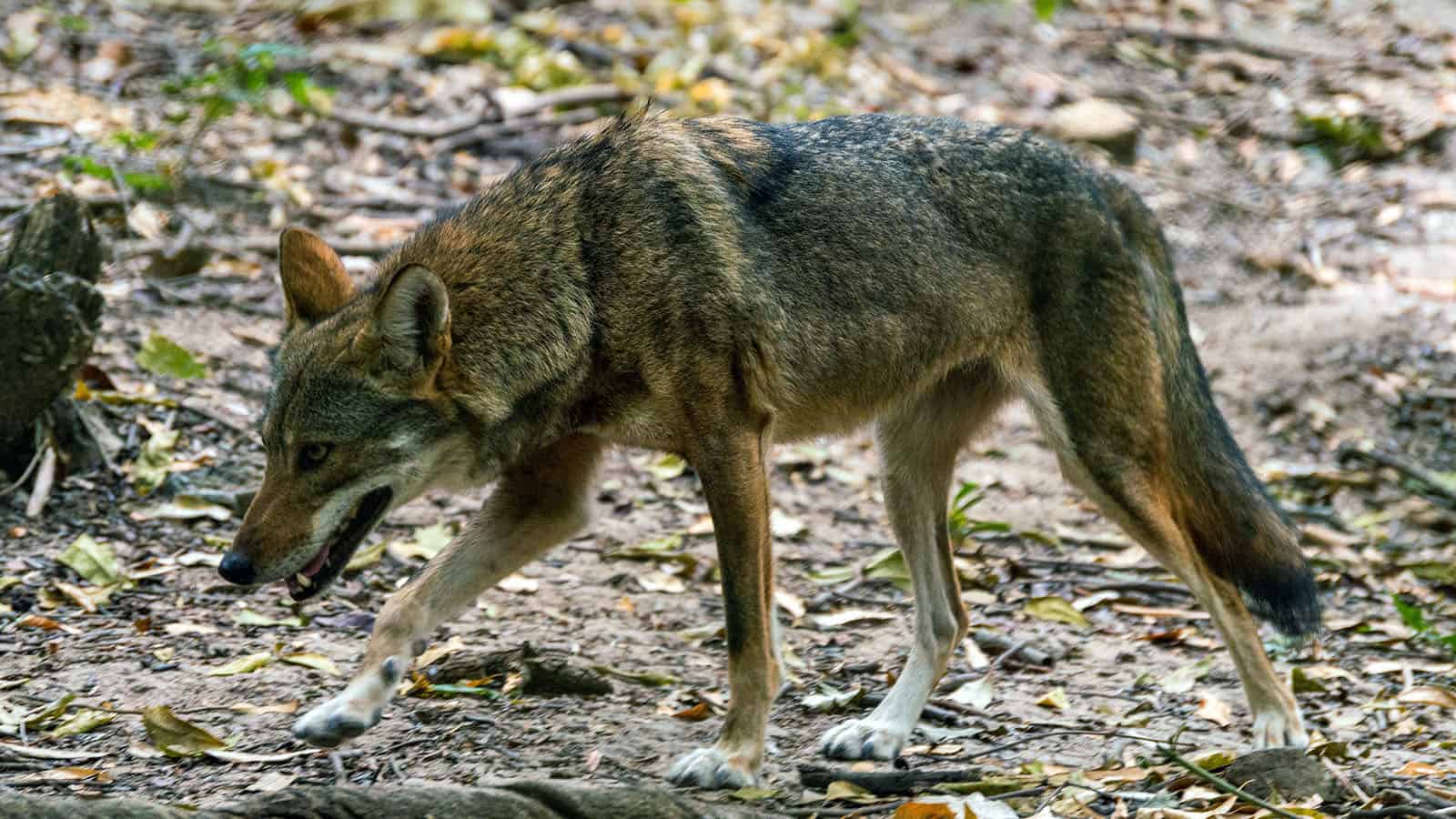
Bow hunting for coyotes can be pretty fun as well. It can certainly be exhilarating, mainly because this is one of the only predators on the list today. Furthermore, coyotes present much larger targets than anything else we’ve looked at today, which means that they should be relatively easy to shoot.
However, the hard part is getting the coyote to you, because these are some of the most skittish animals on the list. They don’t like people. Therefore, once you lure them in, shooting them should be easy. If you follow the tips as listed below, bow hunting for a coyote should prove successful.
- Before you start to lure a coyote in, it’s a good idea to choose a location where you want to shoot at. Coyotes are very fast, so you want to have your shot already lined up. If you call in a coyote and it comes running at you, and you don’t have your range figured out, you’ll probably miss your shot. Therefore, pick a location, a rough location where you want to shoot, and try to lure the coyote into that area.
- To lure in a coyote to get it into range to shoot with a bow, using a call is best. Yes, you can use a mouth call, but electronic calls with remotes work better. You want to be able to place your speaker away from yourself. Coyotes don’t like coming near people, so if they spot you, they won’t come close.
- A coyote call might be ideal to get it within range. However, they won’t come any closer without decoys. You need to have some well positioned decoys that look very real.
- Coyotes are quick and hard to hit, and a bad idea is shooting from a standing position. It is best to shoot coyotes from a seated or kneeling position, as this allows for much better stability.
Required Gear for Small Game Bow Hunting
Before you go with small game bow hunting, there are many different pieces of equipment that you might require.
We have done our best to provide you with a comprehensive list of equipment. This is divided into a few different categories, for your convenience.
Footwear and Clothing
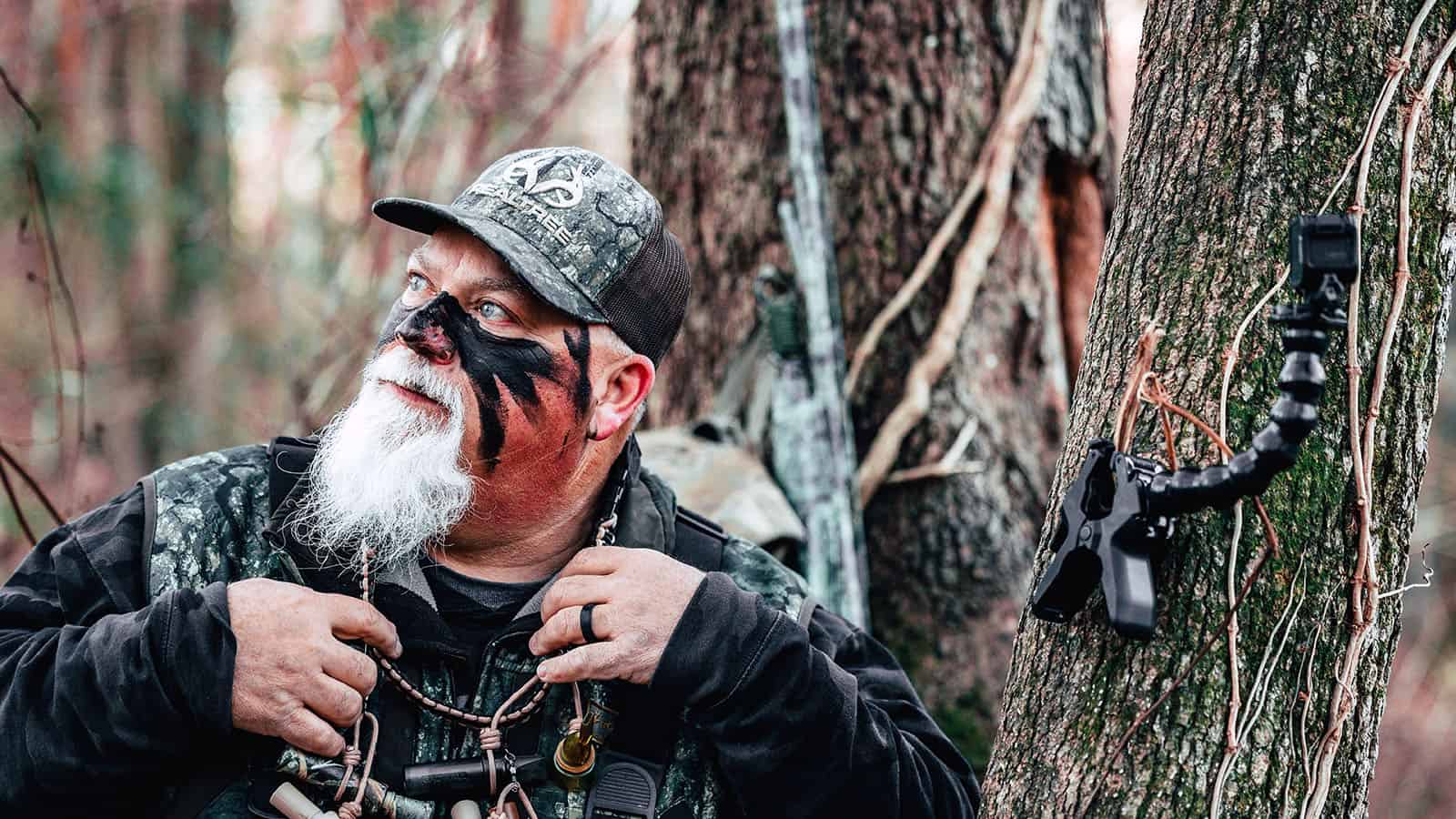
Before we talk about hunting equipment, you need to dress right first. Having the right clothes and footwear is essential.
This is especially the case if you are hunting during the colder seasons. If it is to be rainy or snowy, you need to be dressed appropriately. Here is a list of the clothing and footwear you may need for small game bow hunting.
- Waterproof boots.
- A face mask.
- A hat.
- Gloves.
- Two or three pairs of socks.
- Full rain gear.
- A well-insulated base layer.
- A well-insulated mid layer.
- A waterproof outer layer with camouflage.
Hunting Equipment
Now that you are fully dressed, it’s time to talk about hunting equipment. As you are about to see, there are many different pieces of hunting equipment you need for small game bow hunting.
- Arrows and arrow tips.
- Your bow of choice.
- A backpack.
- Allen wrenches.
- Extra broadheads and arrow heads. (Broadheads like these Muzzy Broadheads work very well).
- Gear Hooks.
- Prey Calls.
- GPS.
- Knife.
- Pull-up ropes.
- Maps.
- Rangefinder.
- Tree stand. (A good tree stand such as this Guide Fear Deluxe Tree Stand is recommended.)
- Wind direction checker.
- String wax.
Other Items
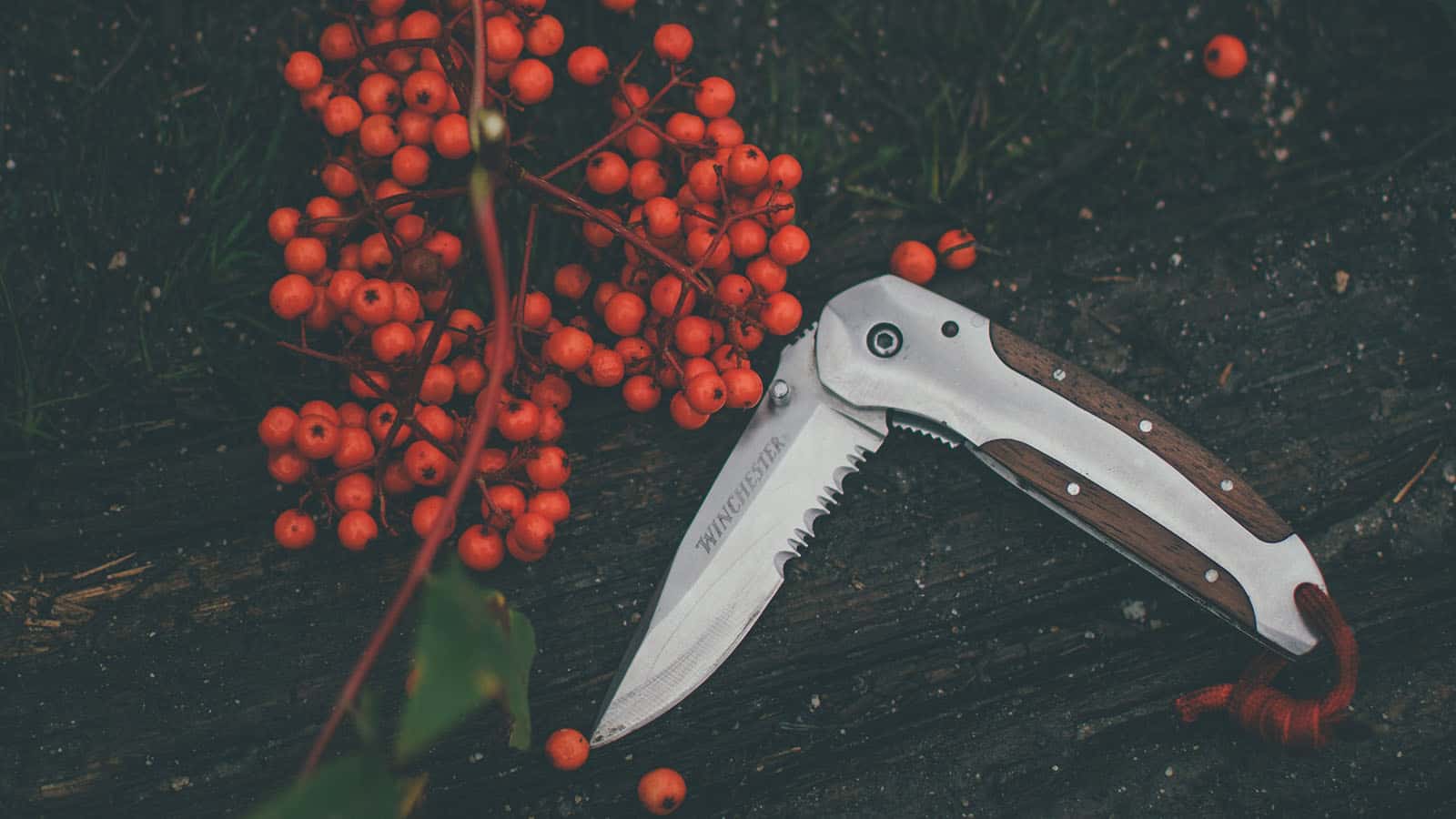
You now have your hunting gear and clothing gear gathered. However, there are other things you will need if you plan on being outdoors all day. You will need a variety of toiletries, personal items, and miscellaneous items. Let’s take a quick look.
- Cell phone.
- Cell phone charger.
- Toilet paper.
- Scent-free soap.
- Medications.
- Batteries.
- Flashlight.
- Bug repellent.
- Lighter.
- Knife sharpener.
Time and Location – When & Where
Obviously, we cannot talk about each individual animal that is liable for small game hunting. Instead, let’s talk about three of the most popular small game animals that are bow hunted for.
These include rabbits, squirrels, and birds, such as doves. Let’s talk about the best times and locations for each of these animals.
Rabbit Hunting with a Bow
If you plan on rabbit hunting, the best time is in the early morning and during the late afternoon. This is when rabbits are usually away from their nesting areas.
This is also when rabbits tend to be the most active. In terms of location, anywhere with cover is good. Rabbits like to hide in thick vegetation, sagebrush and behind large rocks. Rabbits also prefer being on hillsides.
Squirrel Hunting with a Bow
If squirrel hunting during the warmer seasons, at dawn and dusk is best. This is when squirrels are the most active and searching for food.
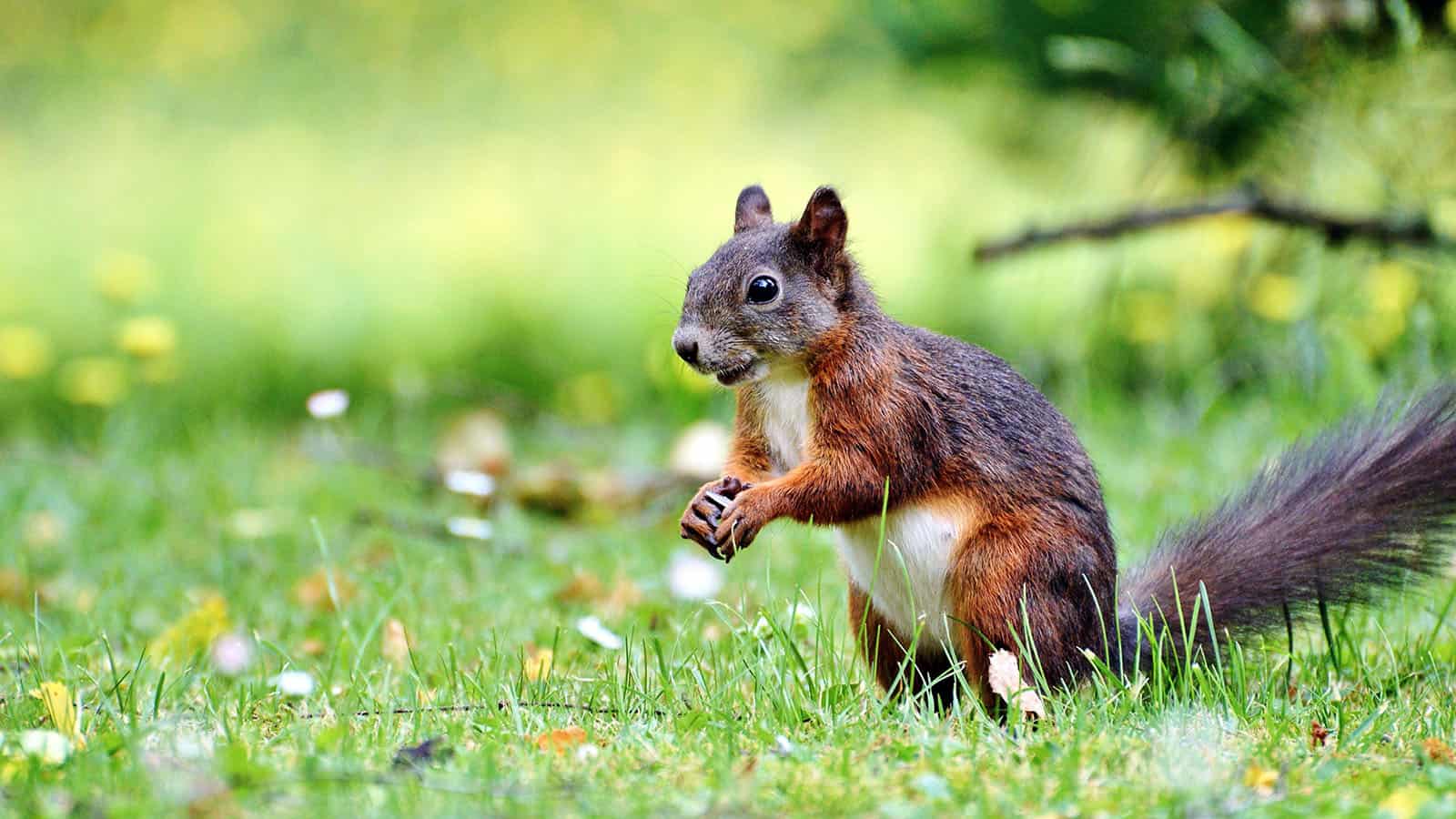
During the middle of the day, you may find squirrels sleeping on branches. However, if the weather is bad or cold, they’ll usually be in their dens during the day. If the weather is cold, after dawn and before dusk is best.
In terms of location, near water is generally best. Trees growing near water have the biggest acorns and fruit. This is where squirrels like to be. Squirrels also need to drink water.
Bird Hunting with a Bow
If you plan on bird hunting, from dawn to 11 AM is usually best. This is when birds tend to be the most active. The late afternoon and evening are also ideal. This is when birds move back to their feeding areas. Generally speaking, it is best to shoot birds when they are on the ground. It is much easier to hit a bird on the ground than it is if it is in mid-flight.
Preparation & Setup
Here we have some tips on how to prepare and set up for small game bowhunting. This is a quick yet comprehensive list that starts right at the beginning. With these few simple steps, bow hunting small game should be successful for you.
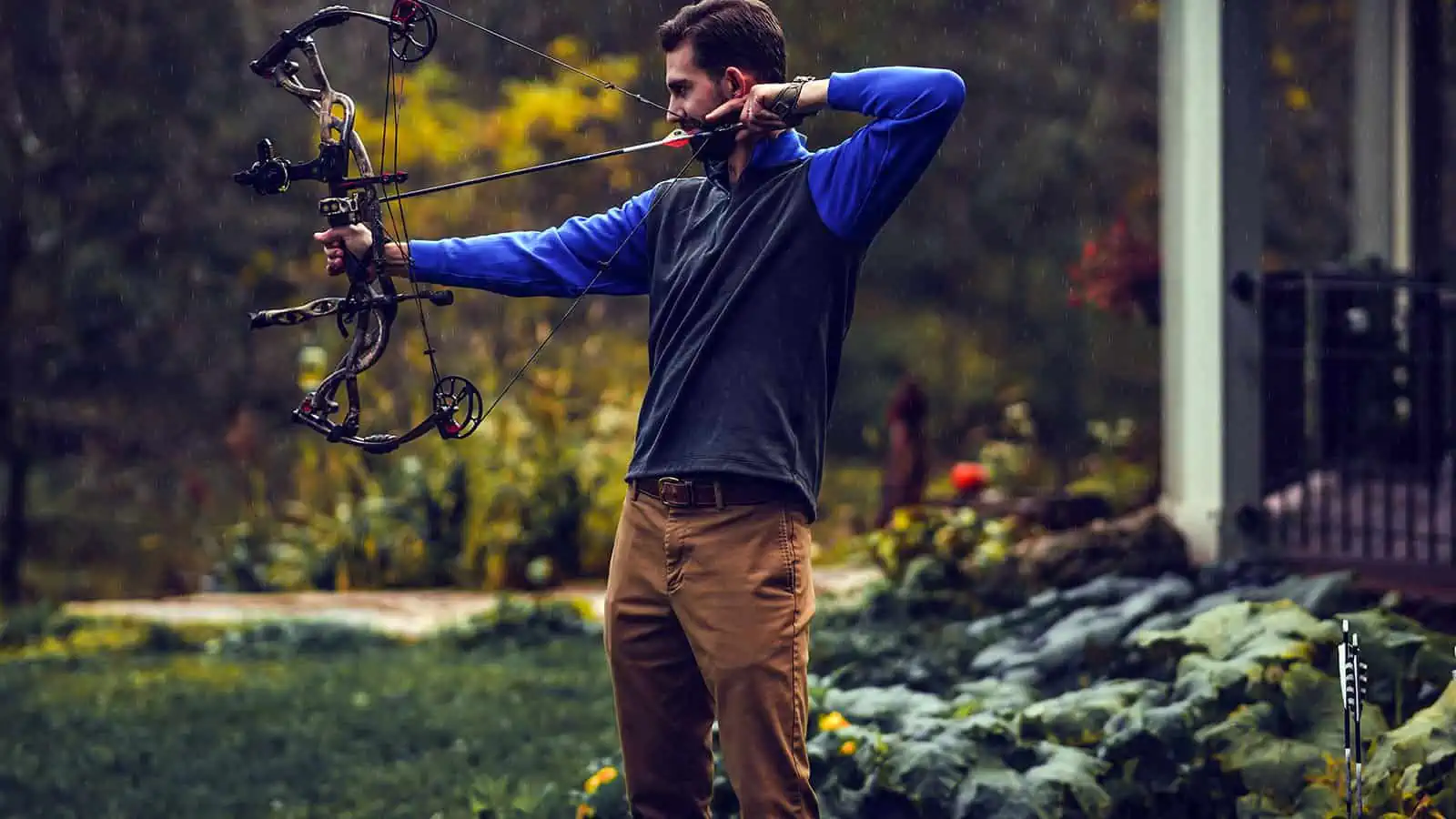
1. Get Educated and Licensed
In the USA, in most places, you must first take a hunter education course. You must also get your hunting license. You cannot hunt without both of these things.
2. Select a Small Game Animal
Now it’s time for you to select a small game animal to focus on. You can choose from any one of these small game animals as listed above.
3. Gather Your Equipment and Practice
You now need to gather all of the equipment you will need to hunt the animal you have selected. This includes hunting equipment, clothing and footwear, and miscellaneous equipment. Of course, your bow and arrows are the two most important things.
4. Inspect and Prepare Your Gear
You also want to learn about the gear you have purchased. You need to be able to inspect it to make sure it is in good condition. Always inspect and maintain your gear regularly. If you are sure that all of your gear is up to par, you can move on.
5. Find and Scout Hunting Locations
You should know the areas where the small game animal in question likes to frequent the most. Do some research in terms of where you can find said small gang animal. Then, travel to the location in question and do some scouting. See if you can find the animals themselves, tracts, or evidence that they are present.
6. Go For the Hunt
Once the other points on this list have been completed, you can choose a day to go hunting, and test your luck.
Tips & Tricks
Let’s go over a few tips and tricks to help make your small game bow hunting journey a success.
- Choose the right type of bow for the small game in question. Longbows, recurve bows, and compound bows are ideal. For instance, this Bear Archery Montana Longbow is a fan favorite.
- For small game, a bow with a draw weight of 30 or 35 pounds is ideal.
- For small game, blunt point arrows tend to be the best. Remember that broadheads are best for big game hunting, not small game.
- Always use scent maskers or else the small game animals will smell you. On that note, make sure to stay downwind from your targets.
- It is ideal to have the sun in your back. This will obscure you from vision.
FAQs
1. What game would you hunt with blunt arrow points?
The best animals for this type of arrow include squirrels, rabbits, grouse, and ptarmigans. These Savage Village Blunt Arrowheads are ideal.
2. What is the best arrowhead for small game hunting?
Blunt arrowheads are usually best for small game bowhunting.
Final Thoughts
You should now have all the information you need to start bowhunting small game. If you follow the tips and tricks as listed above, you should see great success.
